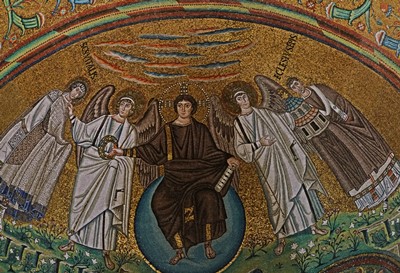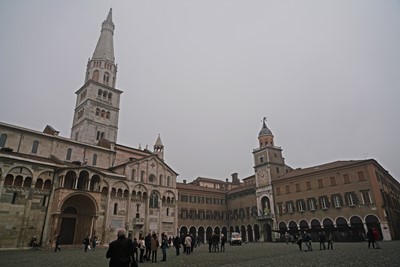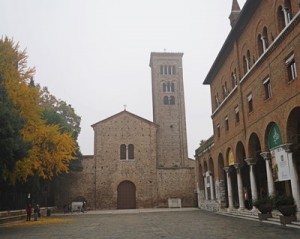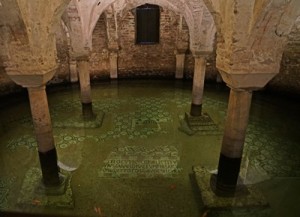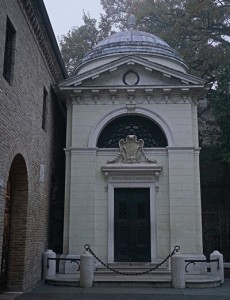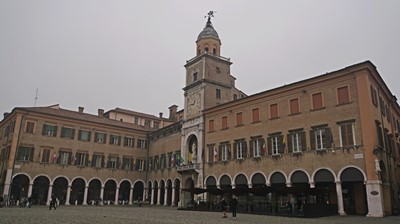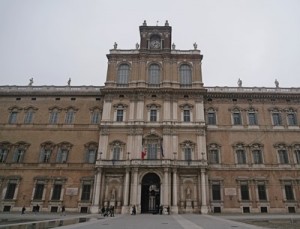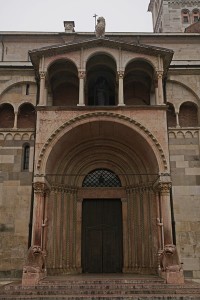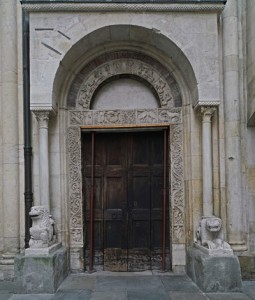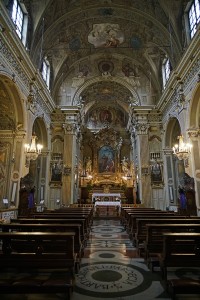Happy wandering in Madrid, Ravenna & Modena November 10 – 14, 2015
2 Days in Madrid, Spain (November 10-11, 2015)
Madrid, the capital of Spain since 1561, is European Union’s third largest city with a population of over 6.5 million in its metropolitan area. As the economic, cultural and political centre of Spain, it has a rich history and culture with many historic buildings, neighbhourhoods and streets and world-class museums including the Prado Museum, the Reina Sofía Museum and the Thyssen-Bornemisza Museum. It is also home to the world-famous football club, Real (meaning royal) Madrid.
November 10 Tuesday: Madrid
I left Miami on November 9 evening and arrived at Madrid around 7 am the following morning. The flight was comfortable and I watched four good films including Mission Impossible 4.
As I would be in Madrid for three days, I bought a 3-day metro/bus ticket for €17 for unlimited travel on 12 metro lines, three ML and rail within the city. Great value! Lawrence and Sally brought the same ticket. In addition, they bought a 3-day Madrid Card for €67 with access to some 50 museums and monuments plus several free tours. I did not buy the card as I have already been to the top three museums in Madrid and the Royal Palace. I want to look at the city rather stay indoor.
![madrid-map[1]](http://www.sarahontheroad.hk/wp-content/uploads/2015/11/madrid-map1-300x180.jpg) We took the metro to the station Gran Via. We made a mistake as we had to change lines twice. On a few occasions, we even had to carry our heavy suitcases walking up and down a few flights of staircases. Horrible! We later found out that we could have saved all the trouble by taking the train and then walked from Plaza Puerta del Sol to Gran Via.
We took the metro to the station Gran Via. We made a mistake as we had to change lines twice. On a few occasions, we even had to carry our heavy suitcases walking up and down a few flights of staircases. Horrible! We later found out that we could have saved all the trouble by taking the train and then walked from Plaza Puerta del Sol to Gran Via.
By 10 am, we arrived at the pension Lawrence had booked online. No one was at the reception/office and we were not sure whether we found the right place. We began searching for another hotel in the same street. Finally someone turned up in the reception after 11 am. But we could not have our room till 3pm.
We left our luggage at the reception and took the metro to the station Opera. As ‘Alcina’ would be performed at 8 pm, I brought a ticket as Lawrence and Sally would not join. Even the cheapest ticket cost €65 while the most expensive ones were over €200.
We walked along the pedestrian area leading to Plaza Puerta del Sol. On the way, we stopped in a Moroccan restaurant for lunch as Lawrence and Sally had never tried couscous.
We were all tired and returned to the pension shortly after 2 pm. They said our room was ready. But we took over an hour to get our room. First, we were taken to the wrong room. Then we were switched to a nice studio. After unpacking, we found out there was no electricity. Hence an hour later, we moved to another one-bedroom apartment in another block. We were pleased and I had a sleep before getting up at 7 pm to go to the Opera House.
This opera written by Georg Friedrich Händel (1685-1759) is about Alcina, a sorceress who cast spell on men and transformed her discarded lovers into rocks, trees and wild animals. Alcina was finally overcome by the love of Bradamante who looked for her betrothed Ruggiero on the island.
It’s my first time in the Opera House which was renovated in 1850 with a magnificent royal box facing the stage. The English subtitles are nicely displayed. First performed in Covent Garden on April16, 1735, the opera is lively with lovely music. Sitting on the last row of the theatre on Level 5, I could still see reasonably well. But I wish I had paid the top price for a good seat!
I took the last train at 12 midnight back to the pension and slept like a baby as soon as my head hit the pillow.
November 11 Wednesday: Madrid
While Lawrence and Sally went museum hopping, I had a leisure time doing nothing. I took the metro to La Latina, an old quarter and went to the market at La Cebada. This is an old quarter of Madrid. I soon found myself outside the Museo de S. Isidro which is hosting a special exhibition on the history of the City Wall. I learn how the city has expanded through the millennium.
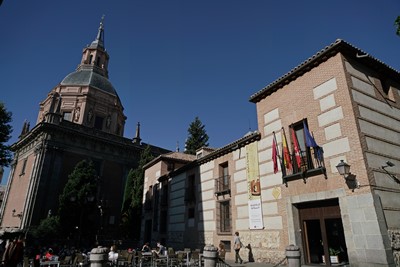 |
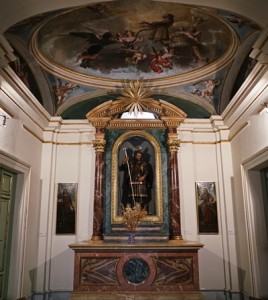 |
Then I followed the main street and reached the Basilica de San Francisco el Grande.Construction began in 1760 under the instigation of King Carlos III, finalised in 1784 and restored in 1880. It is totally unlike the modest churches of the Franciscan order. I paid €3 to enter before it closed at 12 noon.
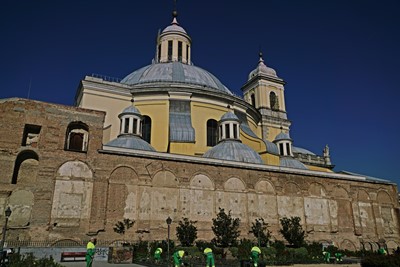 |
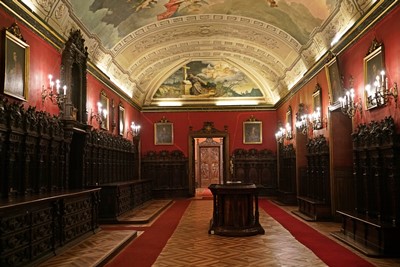 |
The Basilica is topped by a massive dome measuring 33 metres in diametre which is the third largest in Europe after those of St Peter’s and Hagia Sophia.The seven main doors are made of carved walnut and the 16th century Gothic choir stalls came from Segovia. The most outstanding parts of the building are the three chapels adjourning the circular church. The masterpieces include one by Goya depicting San Bernardino preaching and Goya himself; those by Zurbaran and Alonso Cano. The frescoes covering the dome and the ceilings and stained-glass windows were all created in Germany.
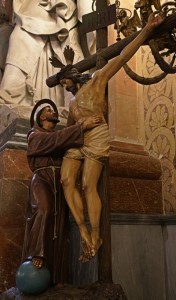 |
 |
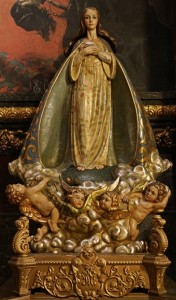 |
I returned to the market and had lamb cutlets for lunch. It’s so delicious and cheap (€8) that I took Lawrence there for dinner. After lunch, I followed Calle de Toledo and reached Plaza Mayor. I remember I had sampled tapas in this square.
Later I arrived at the famous Mercado San Miguel which I had not visited before. There are dozens of eateries: I had a yummy yogurt which is €4. It is excellent and value-for-money for its quality.
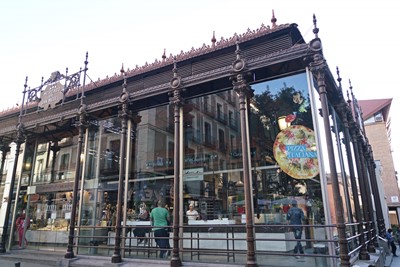 |
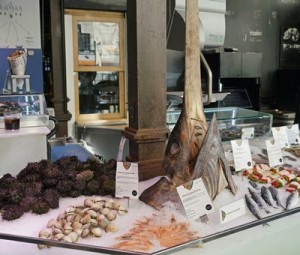 |
 As soon as entering the Cathedral, I was striken by its layout and the Neo-Gothic interior which is uniquely modern. I am amazed by the chapels and statues of contemporary artists, in heretogeneous styles, from historical revivals to “pop-art” décor. The Neo-Romanesque crypt houses a 16th image of the Virgin de la Almudena. The paintings in the apse are by painted by Kiko Arguell, founder of the Neocatechumenal Way.
As soon as entering the Cathedral, I was striken by its layout and the Neo-Gothic interior which is uniquely modern. I am amazed by the chapels and statues of contemporary artists, in heretogeneous styles, from historical revivals to “pop-art” décor. The Neo-Romanesque crypt houses a 16th image of the Virgin de la Almudena. The paintings in the apse are by painted by Kiko Arguell, founder of the Neocatechumenal Way.
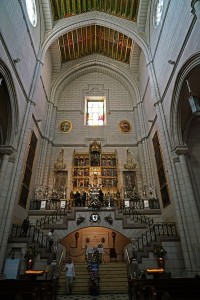 |
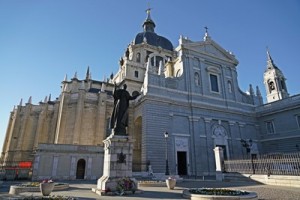 |
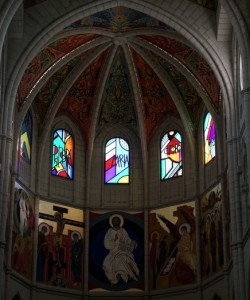 |
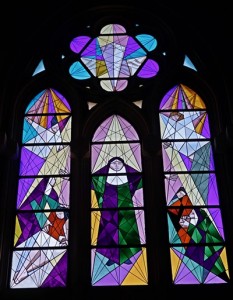 |
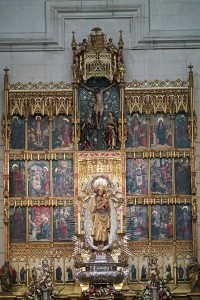 |
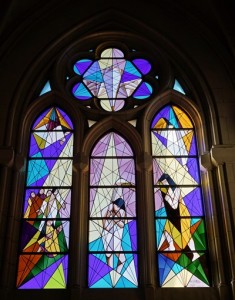 |
I returned to the pension to meet up with Lawrence and Sally. Then we hurried to the market before its closure at 8 pm. The owner was delighted to see me back and got lamb cutlets and fresh cod from her friends in the market. The total bill for our wholesome dinner was only €20.
We had an enjoyable evening stroll to Plaza Mayor and Plaza Puerta del Sol before heading to Gran Via. I had a good sleep again as I was tired.
6 Days in Italy (November 12 – 17, 2015)
November 12 Thursday: Madrid, Spain – Venice, Italy – Ferrara
I left the pension after 11:30 am and walked to Plaza Puerta del Sol to take the train to the airport. I had to change once in Charmantin. It works out perfectly for me: the stations all have escalators. I only took an hour to reach the airport and was resting at the lounge before 1 pm. Unlike airports in the US, the immigration and security checks are more efficient and pleasant.
![karte-1-941[1]](http://www.sarahontheroad.hk/wp-content/uploads/2015/11/karte-1-9411-300x203.gif) I landed in Venice airport on schedule around 6pm. But Venice was not my destination: I would visit four underrated Italian cities and used Ferrara as the base for exploring Ravenna, Modena and Ferrara before heading north to Trieste.
I landed in Venice airport on schedule around 6pm. But Venice was not my destination: I would visit four underrated Italian cities and used Ferrara as the base for exploring Ravenna, Modena and Ferrara before heading north to Trieste.
I took a bus from the airport to Mestre train station (€8 one way) and then the 7:45 pm train to Ferrara. There is a McDonald in the station. It is my last resort if I cannot find something better. Well, this time, I was lucky to find a decent Chinese restaurant nearby. I had rice and black fungus for only €5.5. The owner did not ask me to pay the €2 cover charge. She might wish to help this poor backpacker!
I arrived in Ferrara an hour later. It was dark, foggy and freezing. I took a taxi to Hotel San Stefano which is close to the centre. I took a short walk to the centre which was dark and dead quiet. I immediately returned to my cozy and comfortable room to rest and work on my travel notes.
November 13 Friday: Ravenna
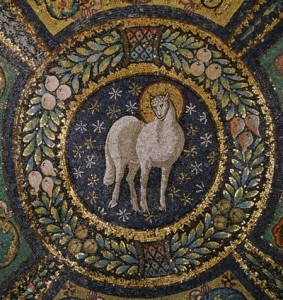 Ravenna, the capital city of the Province of Ravenna with a population of 160,000 in the Emilia-Romagna region, is a showcase of art, history and culture of the first order. It was the capital city of the Western Roman Empire from 402 till its collapse in 476. It served as the capital of the Kingdom of the Ostrogoths till it was re-conquested in 540 by the Eastern Roman (Byzantine) Empire. Thereafter, it formed the centre of the Byzantine Exarchate of Ravenna until the invasion of the Franks in 751 after which it became the seat of the Kingdom of Lombards.
Ravenna, the capital city of the Province of Ravenna with a population of 160,000 in the Emilia-Romagna region, is a showcase of art, history and culture of the first order. It was the capital city of the Western Roman Empire from 402 till its collapse in 476. It served as the capital of the Kingdom of the Ostrogoths till it was re-conquested in 540 by the Eastern Roman (Byzantine) Empire. Thereafter, it formed the centre of the Byzantine Exarchate of Ravenna until the invasion of the Franks in 751 after which it became the seat of the Kingdom of Lombards.
Ravenna is a city of mosaic: its ancient walls conserve mankind’s richest heritage of mosaics dating from 5th and 6th centuries. Eight early Christian monuments in Ravenna are World Heritage properties in recognition of the “supreme artistry of the mosaic art that the monuments contain” and “the crucial evidence that they provide of artistic and religious relationships and contacts at an important period of European cultural history” (information taken from UNESCO World Heritage Site website).Alighieri Dante(1265 – 1321), a great poet of the late Middle Ages, was buried in the city.
The train ride took an hour (€6.4 one way). By 10 am, I was in the beautiful city of Ravenna which is easy to explore on foot. On my way to the centre, I stopped at S. Giovanni Evangelista Church which mosaics are rustic. Then I arrived at Piazza Popolo, the heart of the city.
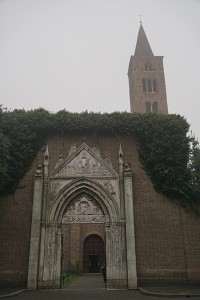 |
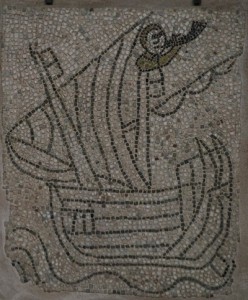 |
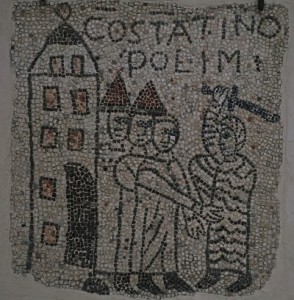 |
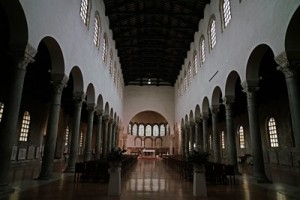 |
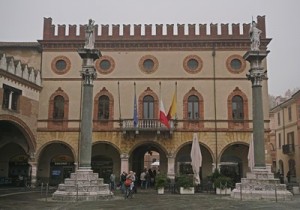 |
I spent seven hours visiting six out of the eight Christian monuments on the World Heritage List. With a combined ticket (€9.5), I visited the Basilica of San Vitale, Mausoleum of Galla Placidia, Neonian Baptistery, St. Andrew Chapel and Archiepiscopal Museum, andBasilica of Sant’Apollinare Nuovo, I have never seen so many beautiful timeless mosaic masterpieces.
First stop: Neonian Baptistery, one of the oldest monuments in Ravenna dating to the early 5th century. The brick building is octagonal in shape while the interior is decorated with marbles, stucco and mosaics of Hellenic-Roman influence. The ceiling mosaic depicts the Baptism of Christ surrounded by his apostles.
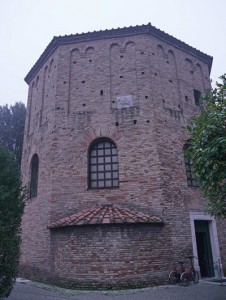 |
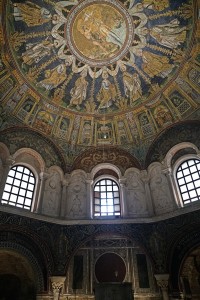 |
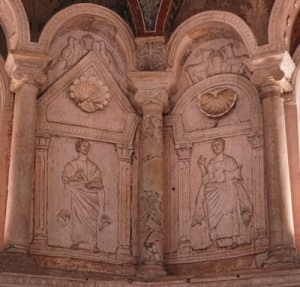 |
St. Andrew Chapel built as a private chapel by Bishop Peter II during Theoderic’s rule, is the only extant intact archiepiscopal chapel of the early Christian era. The decoration of the vault of the vestibule shows 99 species of birds on a golden sky.
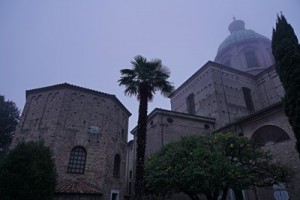 |
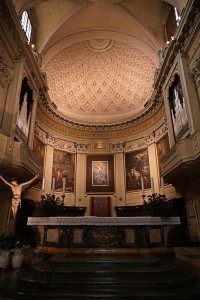 |
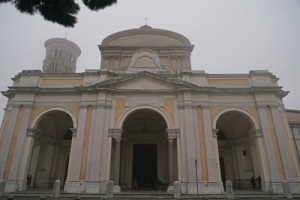 |
The Archiepiscopal Museum is filled with invaluable treasure. I find the unique ivory Throne of Maximian and the Easter Calendar most interesting. I also visited the Duomo nearby.
Second stop:Basilica of San Vitale consecrated in 548 is one of the most important monuments of the early Christian art. It has a central octagonal plan topped by a large cupola. The mosaic decorations of the apse including a representation of the Byzantine imperial couple, Justinian and Theodora are extraordinary.
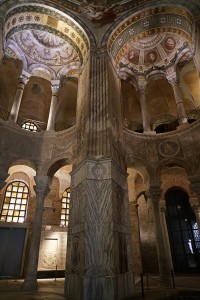 |
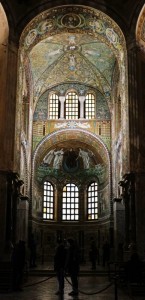 |
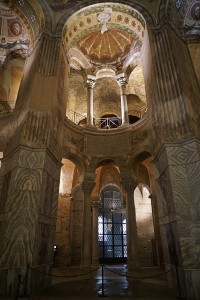 |
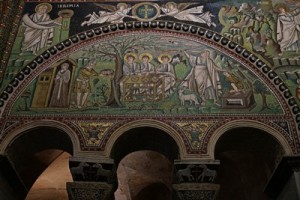 |
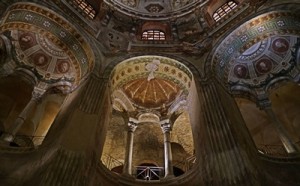 |
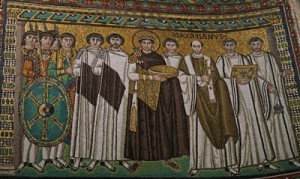 |
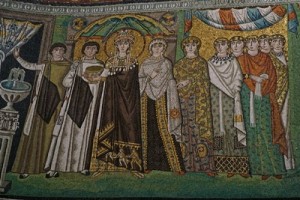 |
Nearby is the smallMausoleum of Galla Placidiawhich was never used because the Empress was buried in Rome. The dome is decorated by countless mosaic stars!
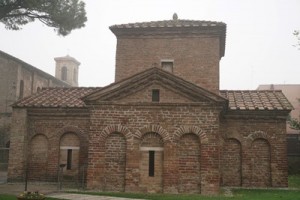 |
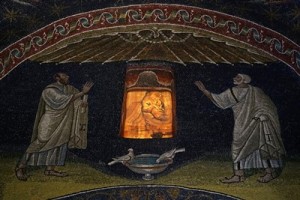 |
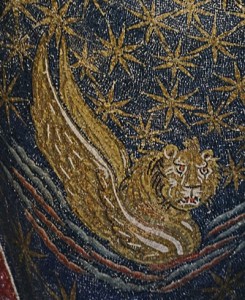 |
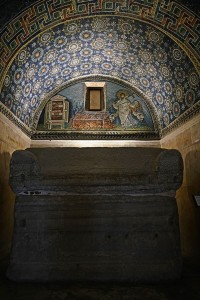 |
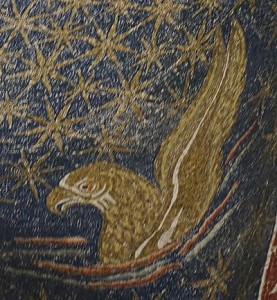 |
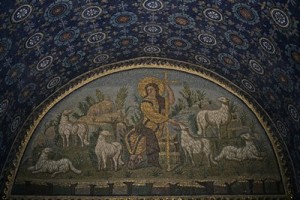 |
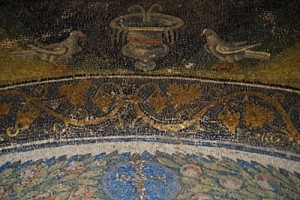 |
Third stop: Basilica of Sant’Apollinare Nuovo built by Theodoric the Great in the 6th century was originally a Palatine Church of Arian religion. The mosaics here document the evolution of the Byzantine wall mosaics from the era of Theoderic to that of Justinian. The 26 Christological scenes from the period of Theoderic are one of the biggest monumental cycles and the most ancient mosaic work of the New Testament of all times.
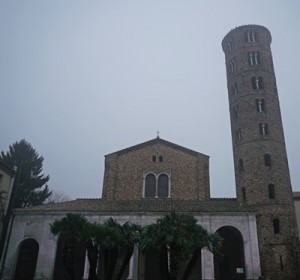 |
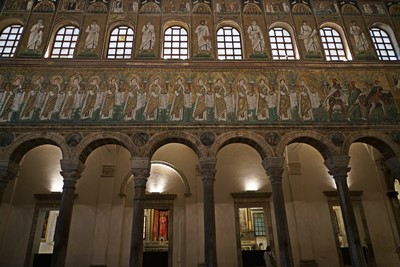 |
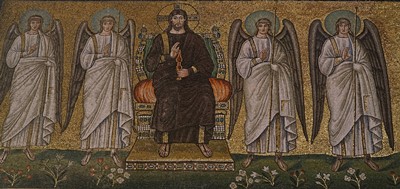 |
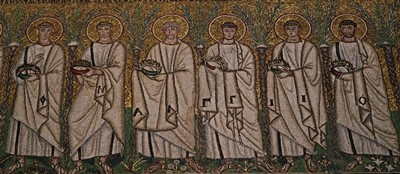 |
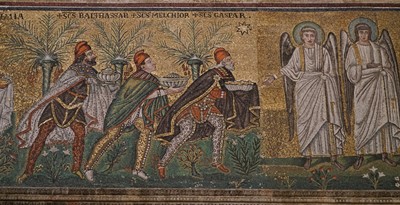 |
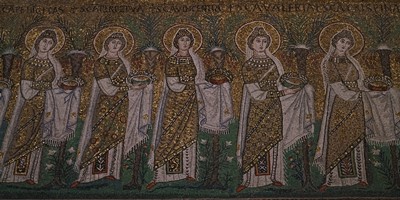 |
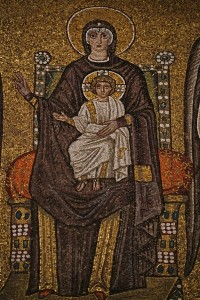 |
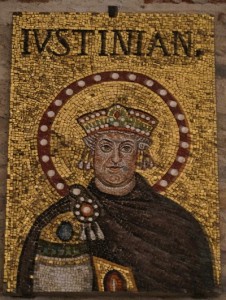 |
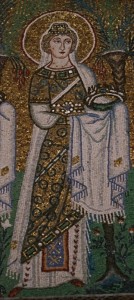 |
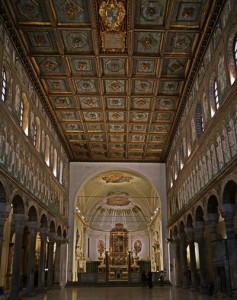 |
Fourth stop: Arian Baptisterybuilt in the late 5th century when the Arian cult was the state religion. The mosaics of the dome depicts the baptism of Christ and his 12 apostles.
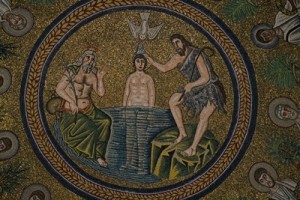 |
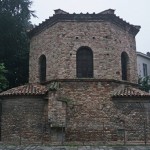 |
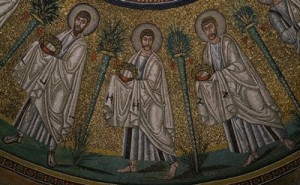 |
As the Mausoleum of Theodoric and the Basilica of Sant’s Apollinare in Classe are outside the city centre and close by 5 pm, I had to leave them and several museums to my next visit.
Before returning to the train station, I went to S Francisco Church which is a pleasant surprise. The lower portion of the apse is flooded!
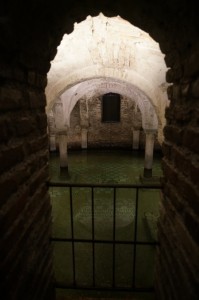 |
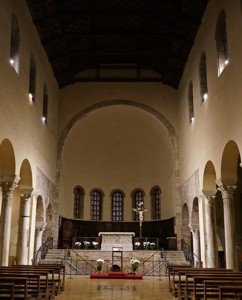 |
I want to pay tribute toDante, one of the greatest poets in the world. But by the time I arrived at his tomb next to the church, it was closed. What a pity!
I was back in Ferrara by 7 pm and found a nice restaurant Hosteria Savonarola next to the castle. A three-course meal together with wine cost €26. The ambiance was good and I was surrounded by locals.
November 14 Saturday: Modena
A city and commune in the Province of Modena in the Emilia-Romagna region with a population of 180,000, Modena is an ancient town and seat of an archbishop. Today, it is also known as ‘the capital of engines‘ since the factories of most of the famous Italian sports car makers are, or were, located here. It is well known in culinary circles for its production of balsamic vinegar. The city is proud of its prodigy son operatic tenor Luciano Pavarotti (1935-2007). The Cathedral of Modena, the Ghirlandina Tower and Piazza Grande are on the World Heritage List.
I took the 8:11 am train to Bologna, changed another train and arrived in Modena by 9:30 am. The single ticket cost €7.1. Without knowing the shortcut from the station to the city centre, I took almost half an hour to find my way to the Piazza Grande, the heart of the city. I saw a huge rectangular marble stone called ‘Ringadora‘ a relic from the Middle Ages.
I bought a UNESCO combo ticket for €6 and an audio guide for €4. In this way, I spent almost five hours in the Cathedral and the museum, the Ghirlandina Tower and the Palazzo Comunale.
The Cathedral (Duomo) built by Modenese as the home of Saint Geminiano, their Patron Saint, is a captivating masterpiece of European Romanesque architecture and sculpture. Construction began in 1099 under the supervision of the architect Langranco, working together with Wiligelmo, who decorated the Cathedral with his sculptures. It was consecrated in 1184.
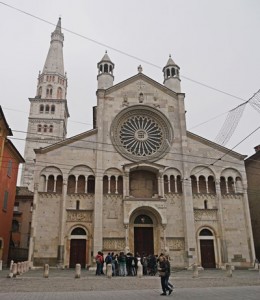 |
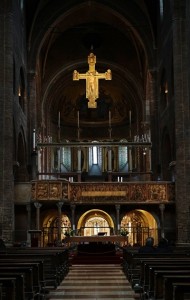 |
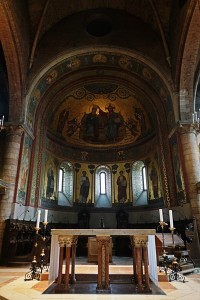 |
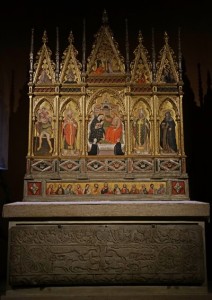 |
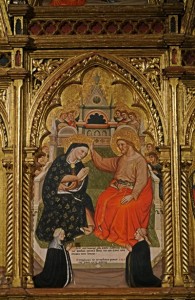 |
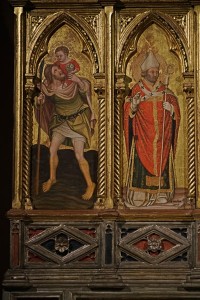 |
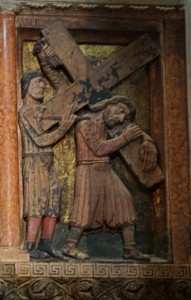 |
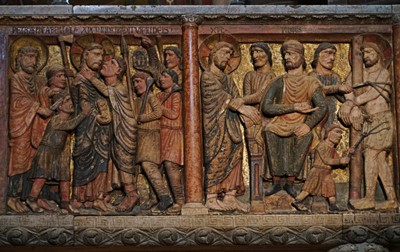 |
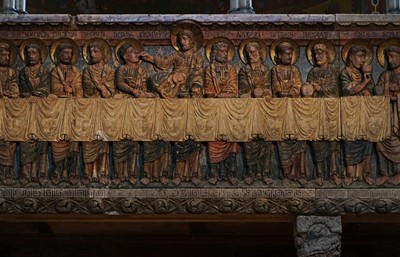 |
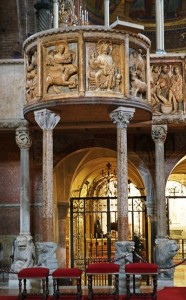 |
With the aid of an audio guide, I learn to appreciate the structure, sculptures and art works inside and outside the Cathedral. The interior is awesome, majestic and unique. I cannot not take my eyes off the wooden gilded crucifix of 1200 hanging above the gallery in which polychrome sculptures are found. It has a marble parapel with sculpted relies by Anselmo da Campione (dating to 1160-1180) and a terracotta crèche by Antonio Begarelli (1527). The Cathedral’s crypt houses the tomb of Saint Geminianus and the Madonna della Pappa.
The exterior is simple but equally impressive. The façade and four doors (Main Door, Princes’ Door, Excellence Door and Fishmarket Door) are different from what I have seen in other cathedrals.
The 87-metre high Ghirlandina Tower (a civic and defence tower) was built between (1169-1319) by Campionese Masters. It is an attractive combination of two architectural styles. The square base section in Romanesque style is the same age as the cathedral while the octagonal and pyramidal upper parts are later and more Gothic in taste.
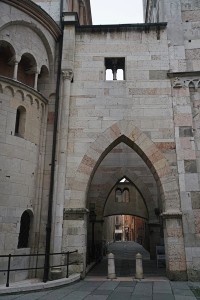 |
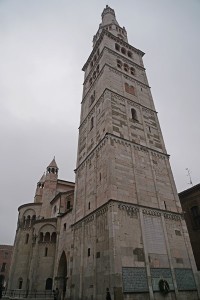 |
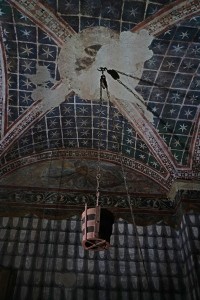 |
It is interesting to walk up the tower: the staircases are built along the side of the four walls. Unfortunately, the weather was foggy and the views were limited. One of the treasures and an identity for the Modenese is a stolen bucket (a replica) on displayed in the tower. It was a kind of trophy stolen from the Bologna army by the Modena forces during the war between the two cities in 1325.
As the museums are closed between 12:30 and 3:30 pm, I had to take a break strolling aimlessly in the oldest part of the city. I took a look at San Barnaba Church which was open. St Francisco Church was closed but the eatery nearby was open. I sampled a most delicious local dish with pig knuckle and minced meat (€25 for a kilo). Finally I found my way to the market which was still busy.
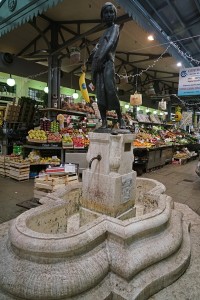 |
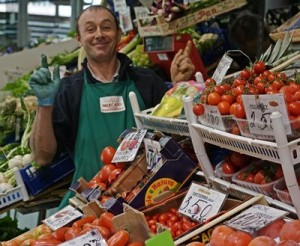 |
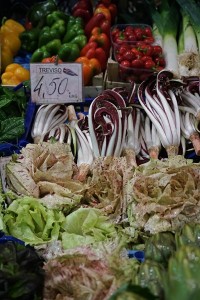 |
I still had plenty of time. Hence I crossed Via Emilia, strolled around Piazza Mazzini where there is a synagogue and finally arrived at Palazzo Ducale which is now a Miltiary Academy. The city centre though small is elegant dotted with more than a dozen of churches and many squares. Christmas was coming and workmen were busy hanging up Christmas lighting.
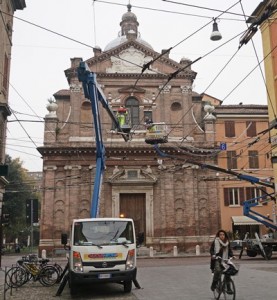 |
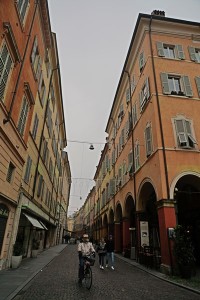 |
At 3:30 pm, I returned to the Cathedral Museum- the last stop for my como ticket. As I had spent so much time looking at the Cathedral and the museum, the receptionist gave me post cards and a booklet on the Cathedral.
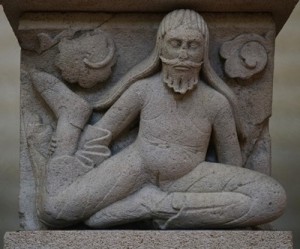 |
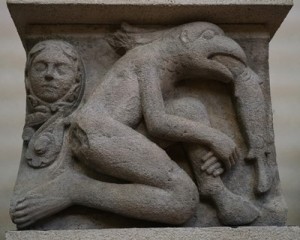 |
I was back in Ferrara at 6 pm. The city finally came to life on Saturday evening. I went to the Cathedral to watch a mass before walking along the busy and atmospheric Via San Romano which is lined with shops and eateries. I reached Piazza Travaglio and could see the city wall. There were still many people in the street and the main squares. But I was tired and decided to skip dinner and return to the hotel.


